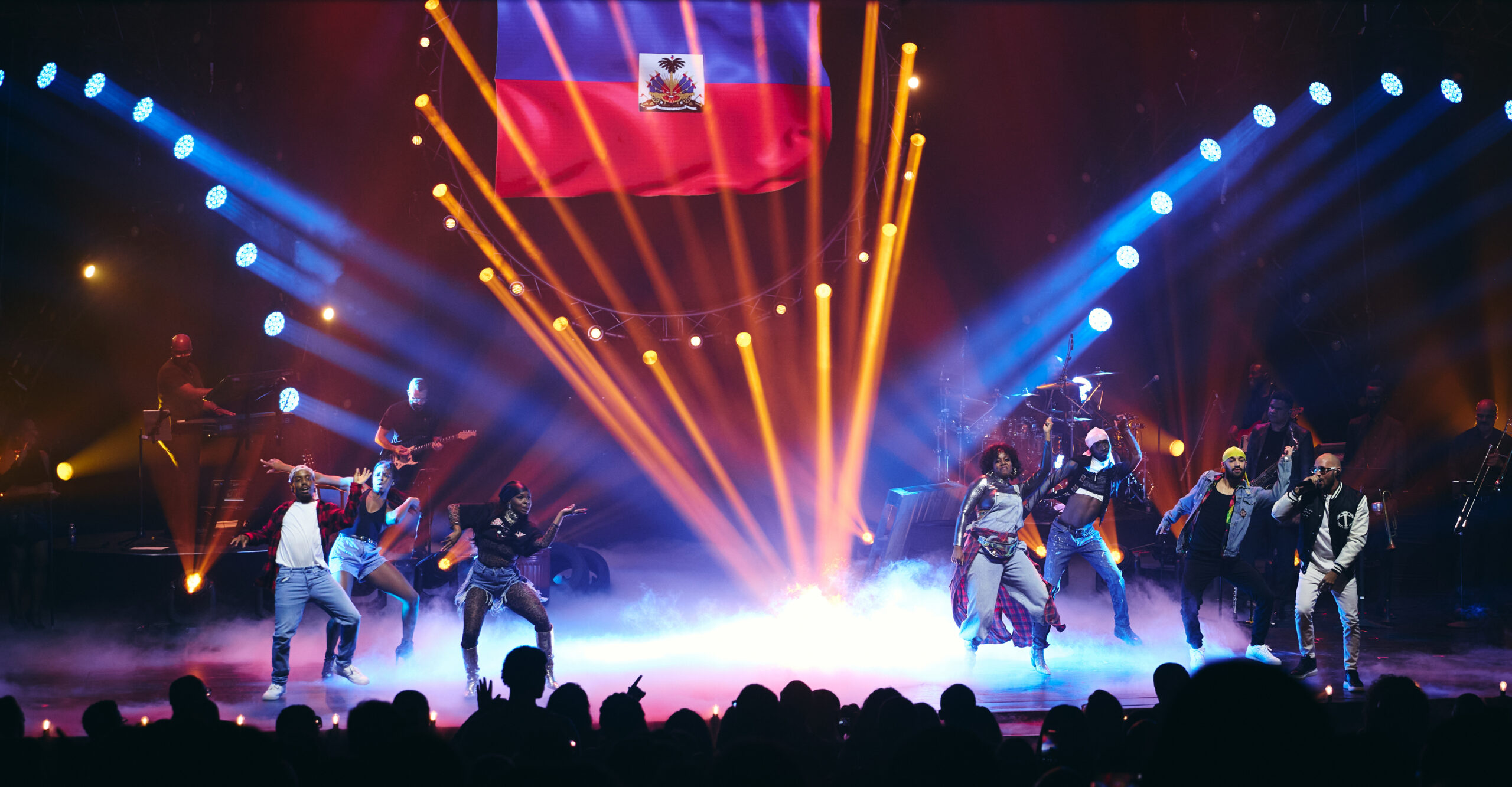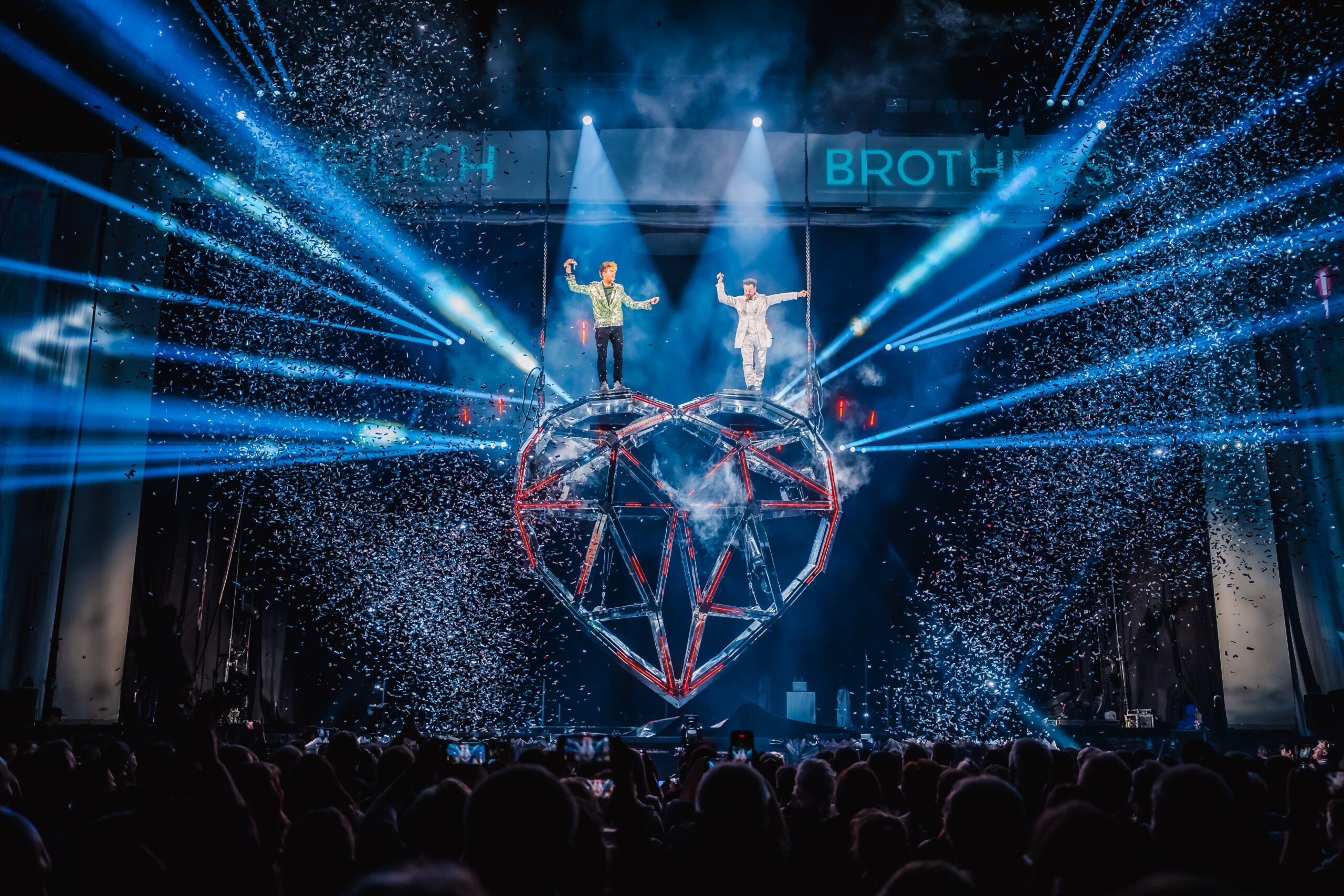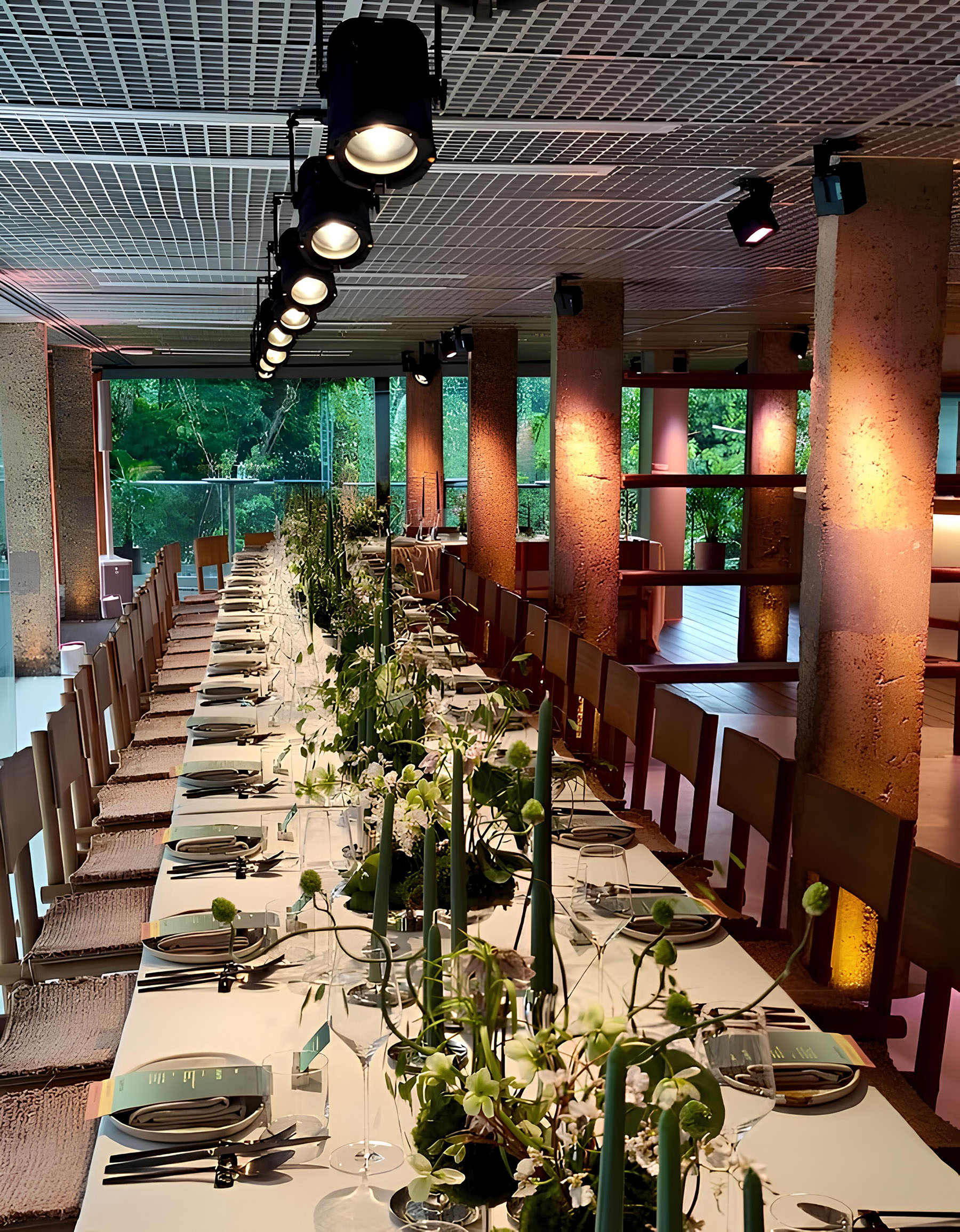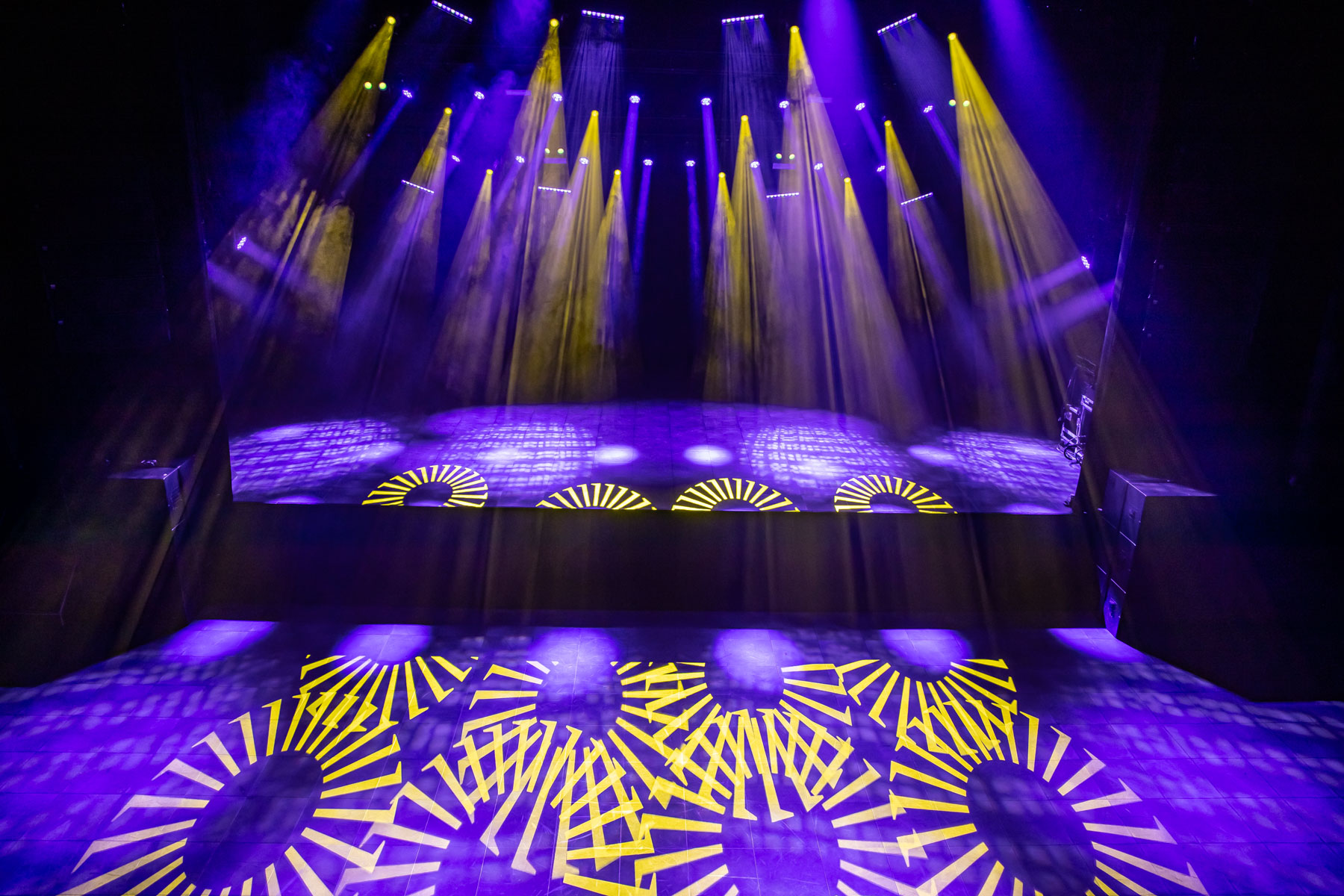LONDON – Panto veteran Nick Richings was designing his first Robinson Crusoe production since 1981, so he had plenty of ideas to bring to the table for this year’s 38-show run. It was requested he make the lighting look like a rock show and fill the large space both onstage and in the auditorium. Ian Westbrook designed the set. HSL supplied and installed the full mother grid, the flying system and lighting.
More details from HSL (http://www.hslgroup.com):
UK lighting and visuals rental company HSL supplied and installed a full mother grid and flying system for scenery, cloths and props, plus all the lighting equipment to stage one of the UK’s highest profile pantomimes this year – “Robinson Crusoe & The Caribbean Pirates” – at the Clyde Auditorium in Glasgow.
The show, produced by Qdos Entertainment, stars John Barrowman who also co-directs with Jonathan Kiley. He’s joined by maverick Scottish comedy duo, The Krankies, in a colouful, all-action romp from Port Glasgow to Skull Island, where good and evil battle it out in classic panto style resulting in a supersonic evening of entertainment, slapstick humor and hilarity.
Nick Richings designed the lighting as a vibrant fusion of moods to match the rhythm of the performance, its multiple locations and quick scene changes.
HSL’s project manager Mike Docksey, says, “It’s great to work with Nick, particularly on this production which really lends itself to dramatic lighting. His designs are always original and innovative. It was also a great challenge to have the chance of designing and installing a full theatrical rigging system tailored to the venue and this specific production. It involved a lot of pre-planning with the Qdos team led as always by production director Mark Sherwood for whom HSL has supplied pantos for some considerable years now. As a result of many hours of hard work and precise calculations we could ensure that all departments using the system had exactly what they required.”
HSL’s Rupert Reynolds, head of rigging, designed the flying and rigging system. It took one day to install, completed in time for all the other departments using it to start work on the Sunday before an opening night the following Saturday.
The mother grid measures 18 meters wide by 12 deep, is constructed from Tomcat 20.5 cm spigoted truss and suspended from six two ton motors. This is flown as high as possible, right up to the house beams, trimmed at 23 meters.
Underneath this are 13 sections of ladder beam trussing on a total of 26 Kinesys Liftket motors, allowing the fast movement in and out of many scenicpieces and cloths. Some pieces are heavier than others, so the deployment of the motors is dependent on the weight being lifted, and the total weight of all the flown scenic elements being 6 tons.
Reynolds designed a fully integrated system comprising 61 motors and 440 meters of truss all crammed into a tight space.
Running at 23 meters a minute, it takes about 8 seconds to lift the cloth bars in and out, which is close to a travel speed of a ‘manual’ theatre fly system – a key requirement that the automated system had to be able to replicate.
The installation was overseen on site for HSL by rigger Paddy Neilly. an experienced Kinesys operator.
The Kinesys Vector control is run by Heather Orr for the shows, a Glasgow based freelance technician, who visited HSL and Kinesys in advance to receive training.
Nick Richings is an aficionado of the specific art of lighting panto, which, done well, needs to contain all the dynamics and ingredients of a standard theatre production, with an almost cartoony texture, which is unique to the genre.
It’s his first Robinson Crusoe for Qdos and the first time he’s worked on a Robinson Crusoe show since 1981, so he had plenty of ideas to bring to the table.
It was requested he make the lighting look like a rock show and fill the large space both onstage and in the auditorium. Ian Westbrook designed the set – a multi-faceted, fast moving and constantly changing, with certain parameters to be lit.
All the lighting is rigged on only three overhead LX trusses suspended from the mother grid, plus two other areas in the house, which meant that Richings had to choose his instruments carefully and really make them work and multi-task. With the final dance and singing routines only finalised during the technical and pre-production week, the lighting had to have a certain amount of room to be evolved in a similar organic style.
Six Martin Professional MAC 3s are rigged on the front of the circle and on the front truss, which do the core of the ‘grunt’ work and basics, together with some projections onto the floor and set. Also on the front truss are six Robe ROBIN 300 Washes.
Around the proscenium – used as a goal post for additional lighting positions – are 12 Robe ROBIN 300 Spots for audience blinding and effects.
Over the stage on the first three LX trusses and their attached side ladders are 18 Robe ROBIN 600 Spots and 24 ROBIN 600 LED Washes. These are maximized to light the depth of the stage.
His idea was to use moving lights where possible rather than generics with scrollers as a hugely more flexible and adaptable option, faster to focus, and needing less maintenance. Positioning the ROBIN 600 LED Washes overhead and on the ladders have not only replaced the traditional ‘pipe end’ wash lights, their multi-functionality gives cold, warm and colored sources all in one fixture. ?
i-Pix satellites warm the various set portals with changing colors. On the floor, i-Pix BB4s are used for up-lighting the front show cloth. Two Atomic strobes are energised for some strobe-tastic scary rock and nasty moments – of which there are plenty in the show, which also features some 3D projections that ramp the atmosphere.
Additionally, two banks of PixelLine LED battens are used for the general cloth washes, which Richings comments are far more effective than a line of single cell cyc units would have been in the ‘old days’ and consume considerably less power.
The only generics in the rig are 30 single PARs and 24 Source Four profiles. There are also LEDs and fiber optic sources in the set pieces and props, all of which are run through the grandMA lighting desk. Richings and senior production electrician Noel “Roly” Smith programmed the console.
The week before, Smith went to HSL’s HQ in Blackburn and prepped the rig – rock ‘n’ roll tour style. The lights are being run day-to-day by the show’s chief electrician Andy Harman.
The challenges of lighting the show included producing a modern look panto but in keeping with the traditional oeuvre and squeezing a rock concert into a theatre space, giving it enough X-Factor style WOW moments without compromising the essence of the performance. It’s a balance that Richings has honed to a fine art in a careful blend of the televisual expectations and live panto presentation.
This is the biggest HSL panto this Festive Season with the 3,000-seat Clyde Auditorium completely sold out for the 38 show run.
HSL is also supplying lighting and special effects to nine other Qdos pantos this season around the UK.



